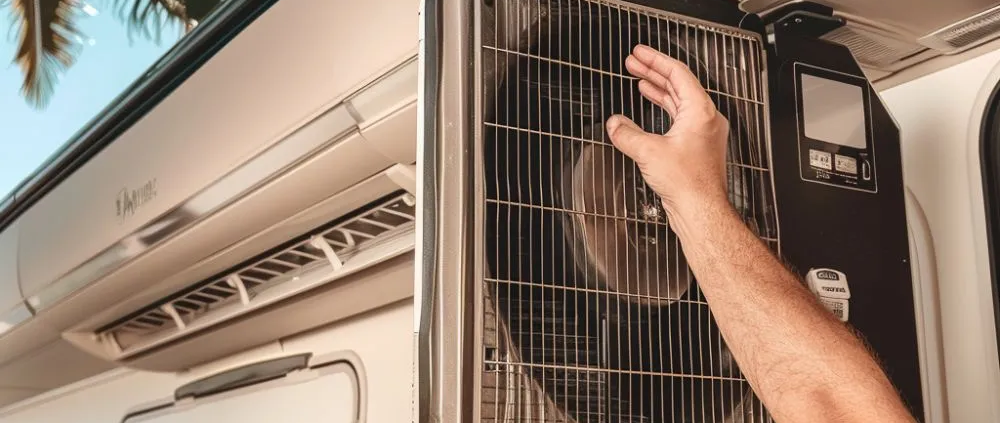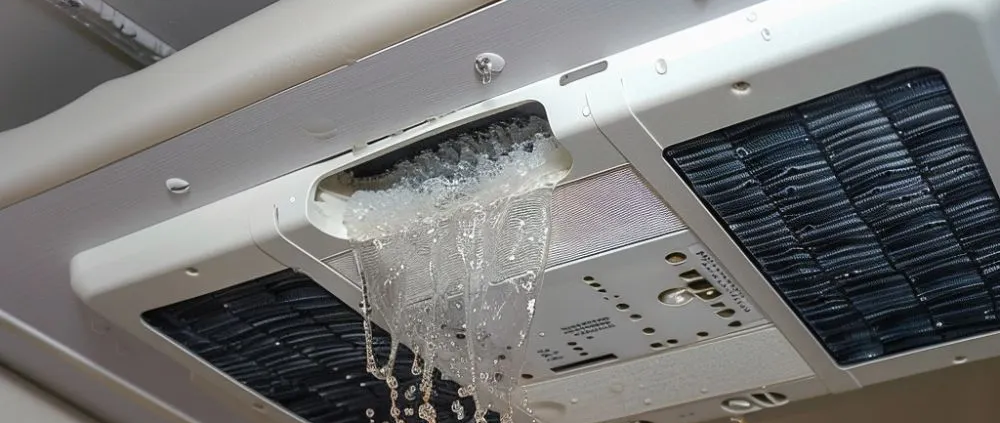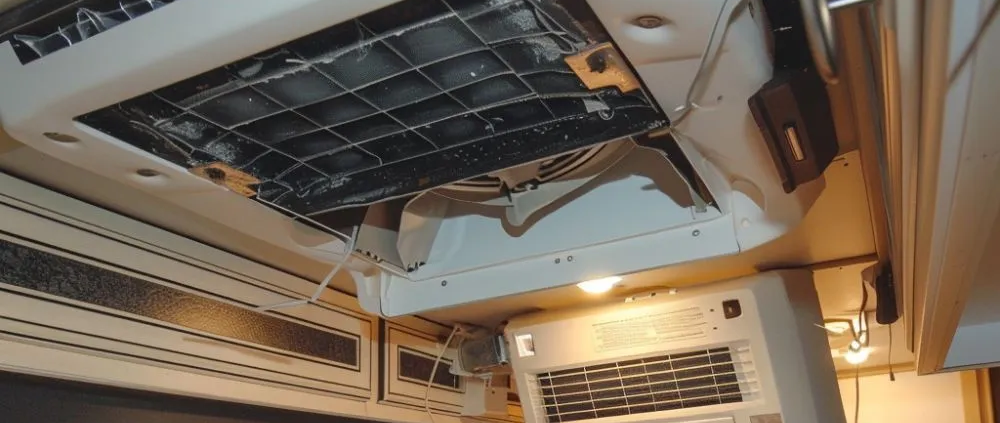How Do you Reset an RV Air Conditioner
For RV enthusiasts, comfort on the road is paramount, especially on hot summer days. RV air conditioning plays an important role in ensuring a pleasant interior temperature while traveling or camping. However, like any other appliance, RV air conditioners can experience problems that require a reset to restore optimal performance. In this article, we’ll provide you with a comprehensive guide on how to reset your RV air conditioner, ensuring you stay cool and comfortable during your trip.
Understanding Reset Requirements:
Before diving into the reset process, it’s essential to understand why you need to reset your RV air conditioner. Common causes include electrical faults, frozen coils, or simply the need to recalibrate the system. A reset helps clear any temporary faults and restores the air conditioner to its default settings, allowing it to operate efficiently.
Step-by-step instructions for resetting your RV air conditioner:
Turn off the power:
Start by turning off the power supply to your RV air conditioner. Locate the circuit breaker or switch in your RV’s electrical panel dedicated to the air conditioning unit and turn it off. This ensures safety during the reset process.
Wait a few minutes:
After turning off the power, allow the RV air conditioner to idle for a few minutes. This step is very important as it allows the system’s capacitors to discharge fully. Waiting ensures that any residual electricity is dissipated while resetting, preventing potential electrical hazards.
Turn the power back on:
After you’ve waited a few minutes, it’s time to restore power to the RV air conditioner. Flip the circuit breaker or turn it back on to supply power to the unit. Make sure you follow proper safety protocols when handling electrical components.
Adjust the thermostat:
After power is restored, adjust the thermostat setting on your RV air conditioner. Set it to your desired temperature and make sure the mode is switched to “Cool” for air conditioner operation. This step ensures that the air conditioner works according to your comfort preferences.
Monitor for proper operation:
Once you have completed the reset and adjusted the thermostat settings, monitor the RV air conditioner for proper operation. Listen for the compressor kicking in and feel the cool air coming from the vents. If the air conditioner fails to work as expected, further troubleshooting may be required.
Inspect filters and vents:
When resetting the RV air conditioner, inspect and clean the air filter and vents. Clogged filters and vents can restrict airflow, affecting the air conditioner’s performance. Regular maintenance ensures optimal performance and extends the life of your RV air conditioning unit.
Seek professional help if needed:
Suppose resetting the RV air conditioner does not solve the problem, or you encounter any problems during the process. In that case, it is recommended to seek professional help. Qualified RV technicians have the skills and tools to diagnose and resolve any underlying problems effectively.
Conclusion:
Resetting your RV air conditioner is a simple but important maintenance task that ensures optimal performance and comfort during your trip. By following the step-by-step instructions outlined in this article, you can effectively reset your RV air conditioner and enjoy cool and fresh air wherever your adventure takes you. Be sure to prioritize safety and regular maintenance to keep your RV air conditioning system in top condition for years to come.
You may like also:
Understanding the Problem: why is my rv air conditioner dripping water inside?
Problem identification
If water is dripping inside your RV from the air conditioner, it is extremely important to address the problem immediately. This problem can arise for a variety of reasons, from minor issues to potentially significant concerns.
Clogged drain line
A common cause of water leaks is a clogged drain line. Over time, dirt, debris, and algae can build up in drain lines, blocking the flow of water. As a result, water can back up and drip inside your RV.
Poor insulation
In some cases, insufficient insulation around air conditioner components can create condensation. When warm air from inside the RV comes in contact with the cold surface of the air conditioner, condensation occurs. Without proper insulation to contain this moisture, it can drip into the RV. If you need RV AC repair service, then go here: RV air conditioner repair near me.
Improper installation
Improper installation of air conditioning units can also contribute to water leakage problems. If the unit is not level or securely mounted, it may not drain properly, causing water to pool and leak inside the RV.
damaged material
Water leakage can also result from damage to key components such as the condensate pan or evaporator coil. Cracks, rust, or other types of deterioration can compromise the unit’s ability to collect and drain condensate effectively.
problem-solving
To solve the problem of water getting inside your RV from the air conditioner, consider the following steps:
Inspect the drain line: Check the drain line for signs of blockage or obstruction. Use a wet/dry vacuum or pipe cleaner to remove any debris that may clog it.
Clean the unit: Clean the air conditioner unit regularly to prevent dirt and debris from accumulating. This includes cleaning the condensate pan, evaporator coil, and surrounding components.
Check insulation: Make sure the air conditioner unit is adequately insulated to prevent condensation from forming. Replace any worn or damaged insulation as needed.
Check Installation: Double-check to make sure the installation of the air conditioner unit is level and securely mounted. Make any necessary adjustments to improve drainage and prevent water leakage.
Repair or replace damaged components: If any components are damaged or deteriorated, repair or replace them immediately to restore unit performance and prevent further water leakage.
Conclusion
Water dripping inside your RV from the air conditioner can be a frustrating and potentially harmful problem. By understanding the potential causes and taking proactive steps to address them, you can prevent water damage and ensure your RV stays comfortable and dry. Regular maintenance and prompt repairs are key to keeping your air conditioner working efficiently and effectively.
You may like also:
How do i make my RV air conditioner colder
Regarding RVing, nothing beats the relief of stepping into a cool, refreshing environment after a day in the sun. However, if your RV air conditioner isn’t delivering the cool blast you want, it’s time to take action. Let’s take a look at practical techniques for maximizing the cooling potential of your RV’s air conditioning system.
Cleanliness is coolness: Start with maintenance.
Proper maintenance is paramount to optimal air conditioning performance. Start by cleaning or superseding the air filter regularly. A clogged filter blocks airflow, hindering cooling efficiency. Additionally, make sure the condenser coils are clean and free of debris. This simple maintenance routine can significantly increase cooling capacity.
Stop leaks: Keep cool air.
Inspect your RV for any potential leaks that could compromise the performance of your air conditioning system. Seal gaps in windows, doors, vents, and any other openings with weatherstripping or caulking. By preventing cold air from escaping and warm air from infiltrating, you maintain a consistent, comfortable interior temperature.
Optimize Airflow: Improve circulation.
Maximize airflow in your RV by strategically placing fans. Ceiling fans can help distribute cool air evenly throughout the space, while portable fans can target specific areas for instant relief. Additionally, consider installing vent covers to control airflow and prevent drafts, especially in windy conditions.
Harness the power of shade: Combat solar heat gain.
Protect your RV from direct sunlight by parking in a shaded area whenever possible. Use awnings, window coverings, or outdoor sunshades to reduce solar heat gain. By reducing the amount of heat absorbed by your RV, you will reduce the workload on your air conditioner, allowing it to work more efficiently.
Upgrade for efficiency: Invest in energy-efficient appliances
Consider upgrading to a newer, more energy-efficient RV air conditioner if your current unit is older. Modern models use advanced technology that provides higher cooling performance with lower energy consumption. Although initially an investment, the long-term savings on energy bills make it worthwhile.
Conclusion:
Achieving optimal cooling in your RV air conditioner is within reach with the right techniques and maintenance routines. By prioritizing cleanliness, closing leaks, increasing airflow, reducing solar heat gain, and investing in energy-efficient equipment, you can create a cool and comfortable sanctuary on your trip. So, get ready, stay calm, and embark on your next adventure with confidence!





